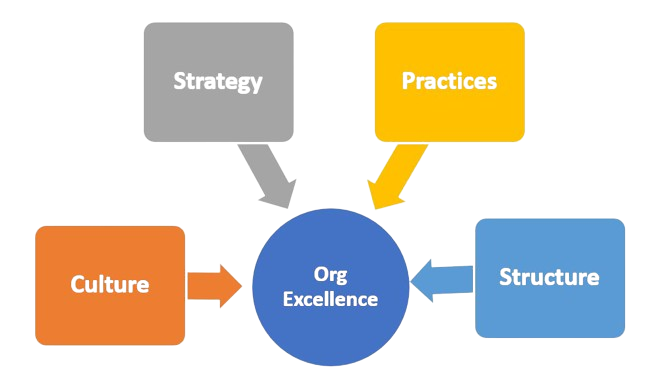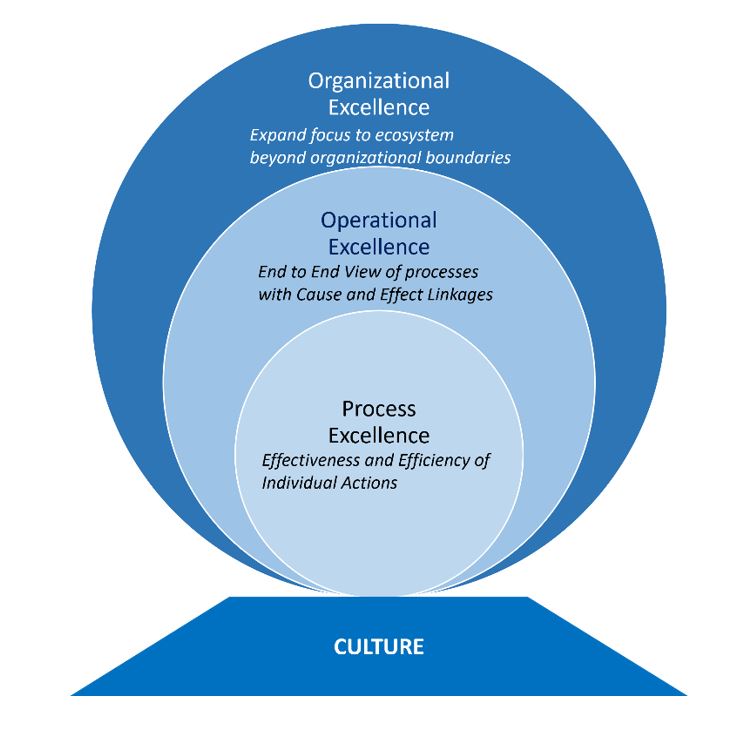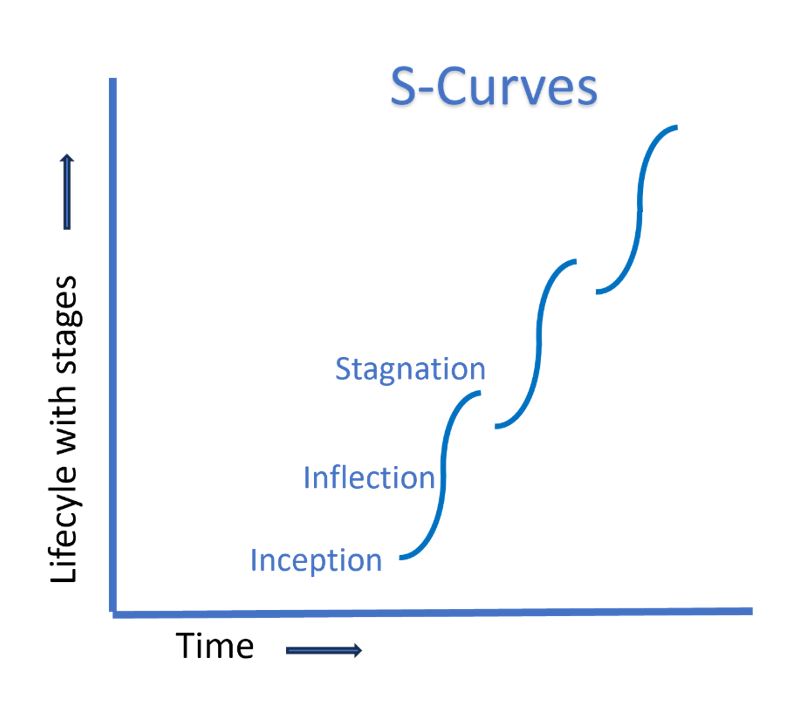Organizational Excellence
In order to meet the everchanging challenges in the business, Organizations need to constantly strive for Excellence and Effectiveness in all aspects of its operations.
Organizational excellence is crucial for not only surviving in a competitive landscape but also thriving and making a positive impact. It fosters a culture of,
- Customer centric Value creation
- Innovation, and
- Continuous improvement
benefiting various stakeholders including customers, employees, shareholders, and the community at large.
To understand and internalize the principles of organizational excellence, four key aspects need to be addressed. They are,
- Culture of excellence and a clearly articulated Purpose
- A strategy to align goals and integrate functions across the organization to realize the mission
- Adopting suitable practices that are contextual, with a focus on regular observations and improvements
- A team structure that emphasizes Autonomy and Mastery


Organizational Excellence – Challenges
While a journey to Excellence may seem to be a never ending progress, teams and organizations can do well to identify a phased approach, so that intermediate milestones may be planned for and derive satisfaction from the progress.
Excellent Organizations are able to visualize and articulate the Macro landscape and their role in shaping the ecosystem and be comfortable at the micro level to ensure flawless execution
Like with any improvement initiative, there could be gaps between the aspirations and the on-ground action.
PM Power’s experience has shown some common anti-patterns that act as barriers in an organizational excellence journey.
Ambiguity in the Vision and Mission, leading to gaps in alignment from the top to bottom
Lack of leadership role models could result in not nurturing a culture of excellence across the organization
Reliance on or recognizing only the ‘heroes’ during crises reduces the urge to build a process based organization
Inadequate listening to customers
Culture of improvement not part of the normal way of working
Tendency to cut corners, particularly with product or service quality, adherence to legal and social requirements

PM Power Approach
S-Curves
S-curves represent any function that starts slow and after a certain time, reaches an accelerated growth phase and then flattens off.
S-curves have been used to represent a typical product lifecycle, technology growth or personal growth among other things.
This also represents the law of diminishing returns, when, after a certain stage, additional investments or efforts spent may not return the same results.
PM Power’s approach has been based on identifying where an individual or organization is on an S-curve, in their growth journey and help catalyse excellence in the chosen area of focus. The key is to identify the inflection points and see how to maximize the opportunity. As you see from the figure, it is important to initiate the next S-curve, before the first one peaks.
While the normal tendency would be to slow down around a curve, the more daring will use the knowledge that most others would slow down, and in a controlled manner, overtake others to get ahead!
In particular, identifying points of discontinuity – sometimes based on a leap of faith, is the critical first step
PM Power Services
While we custom design the interventions based on the organizational context and appetite for excellence, many of the building blocks are based on proven techniques and approaches.
Some of our popular services include:
Full-Stack
Leadership
Programs
Mindful
Leadership
Workshops
Situational
Leadership and
Coaching
Leaders
Transitioning
to Agile
DevOps
Practices
Quality
Improvement
with
Agility
Vision Mission
Facilitation
Product
Definition
Facilitation
Enabling a
Learning
Organization
Note: Hover the mouse to click and read more information.

